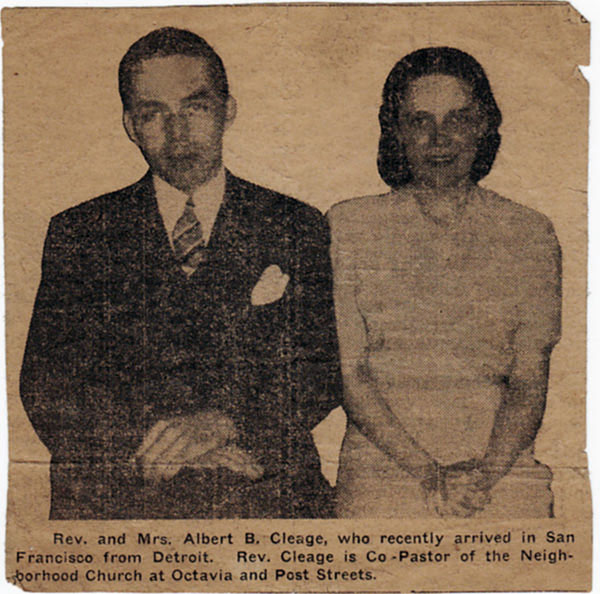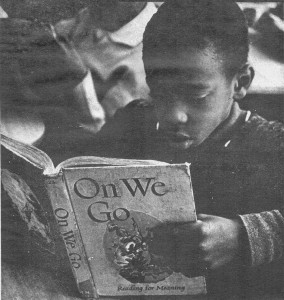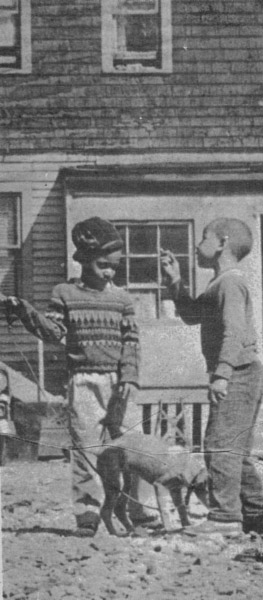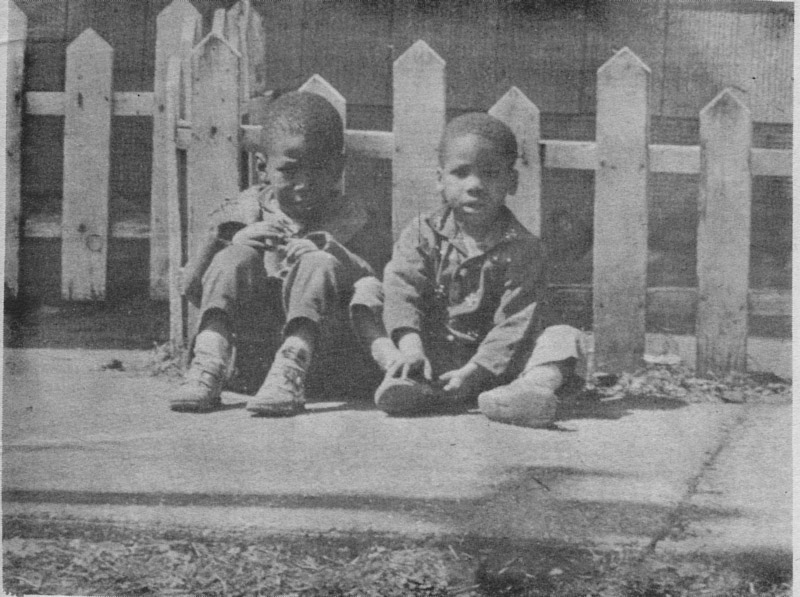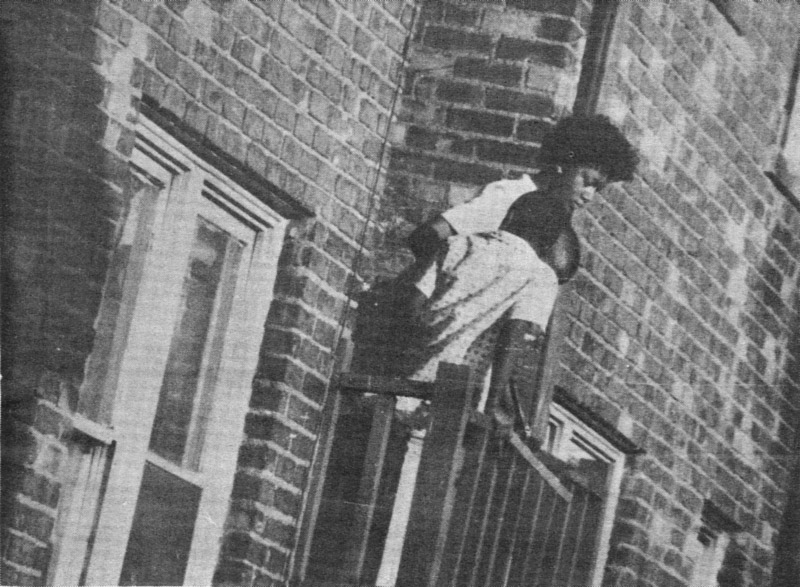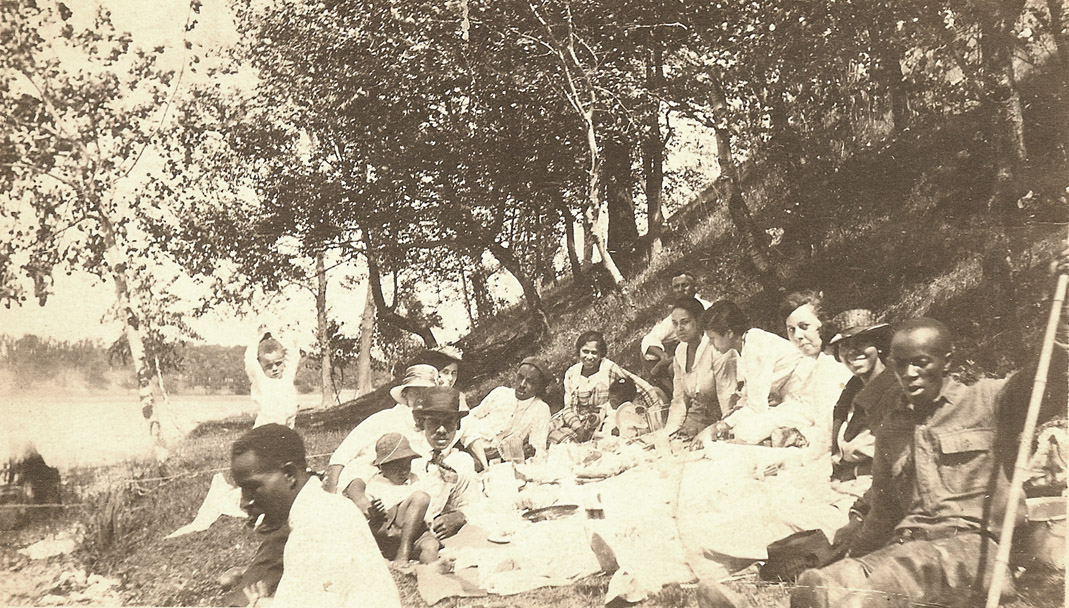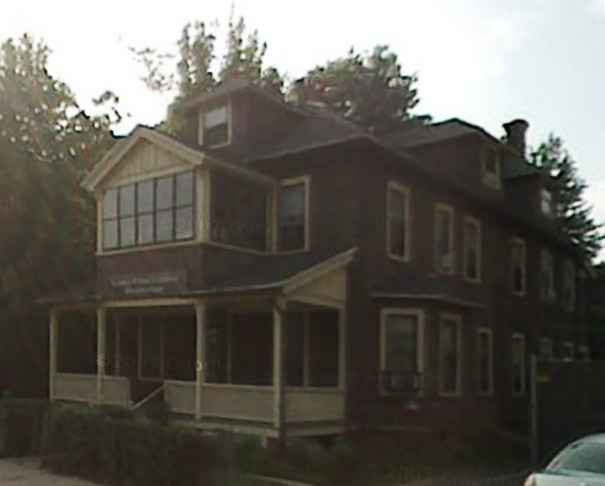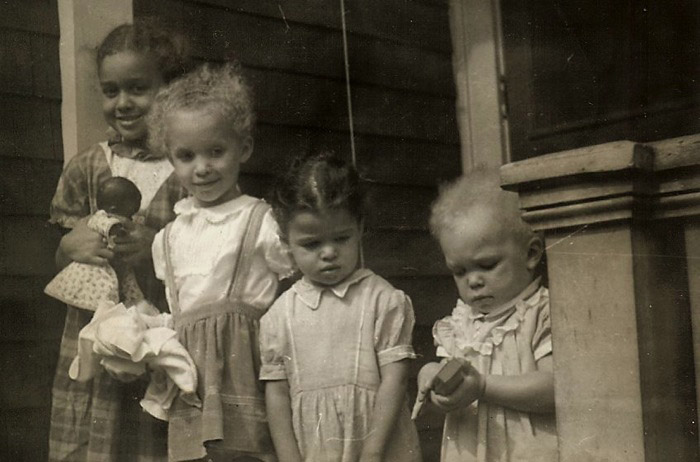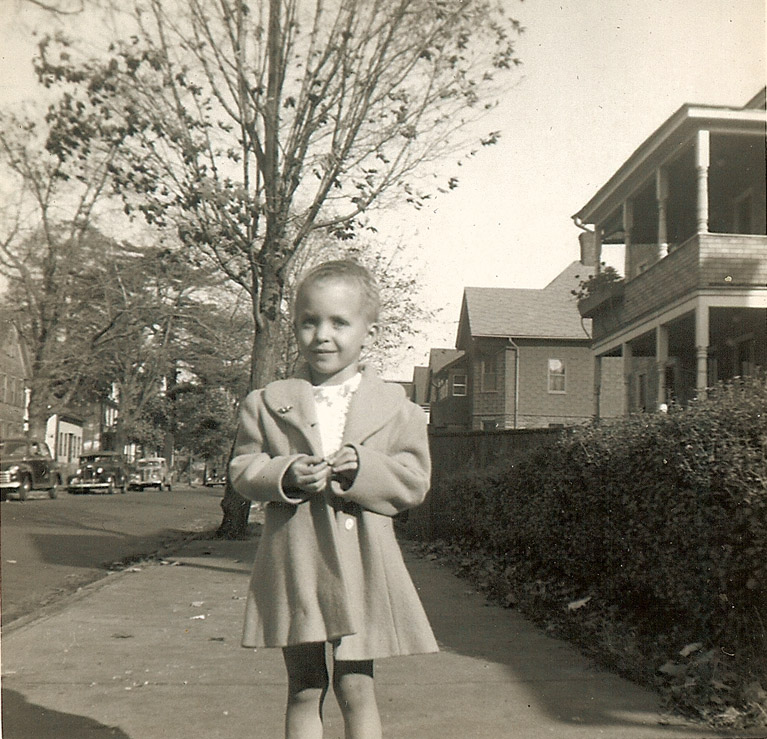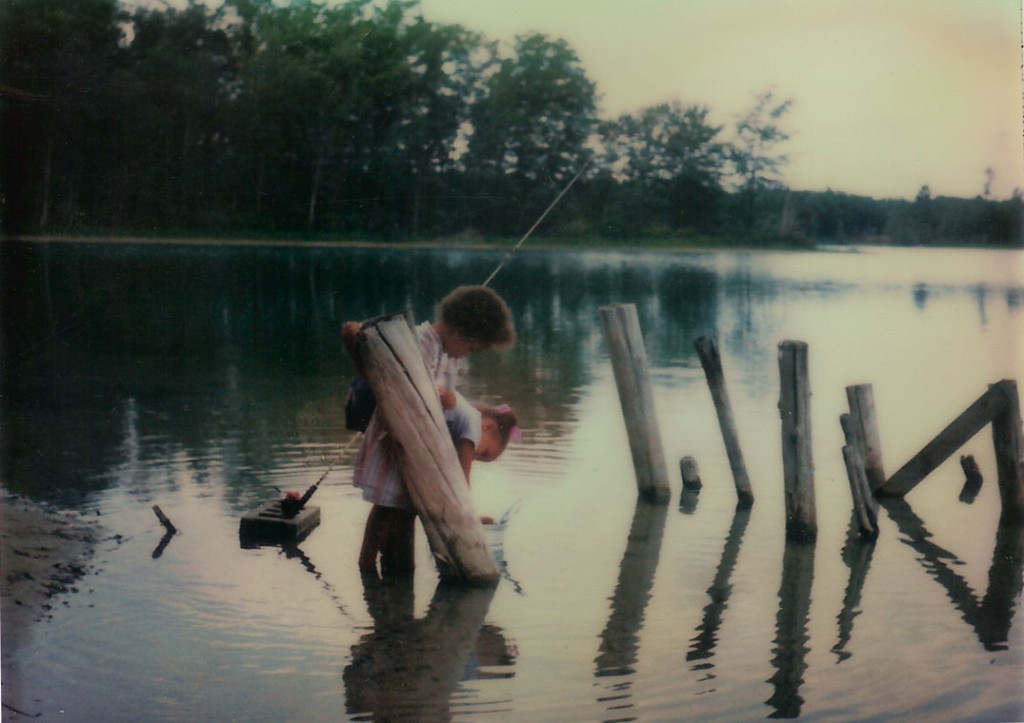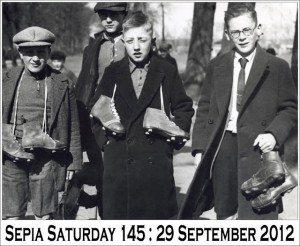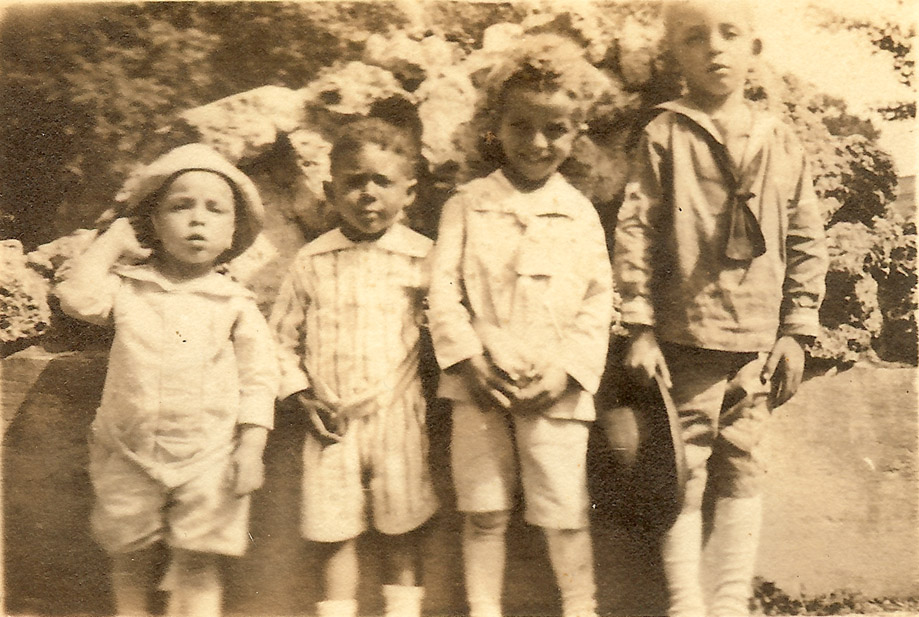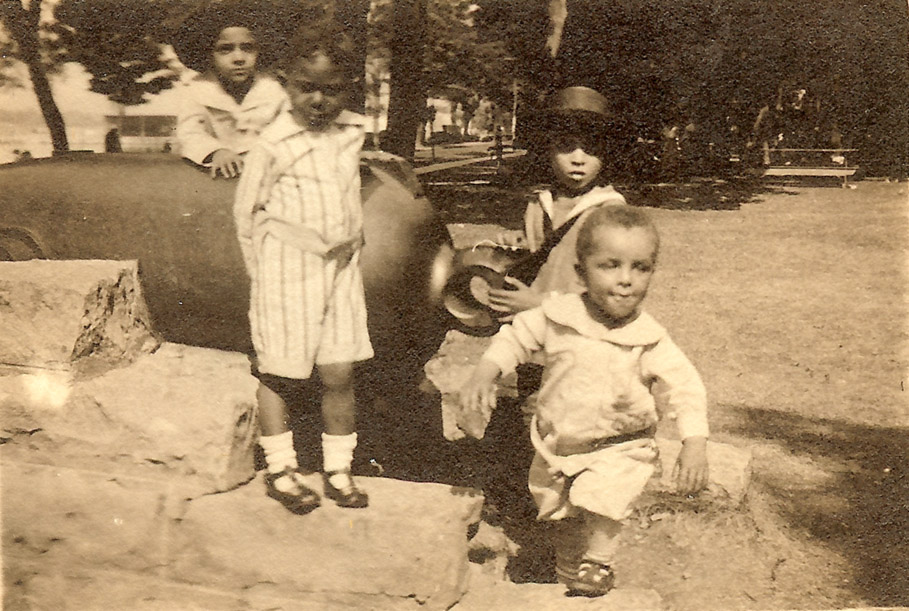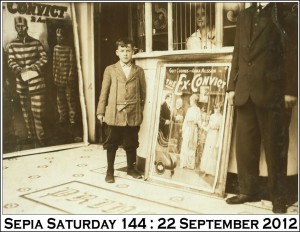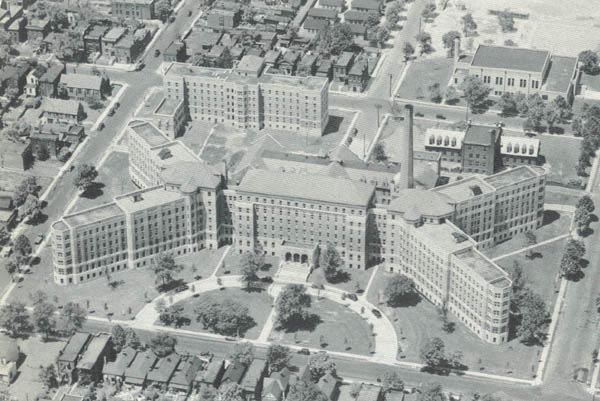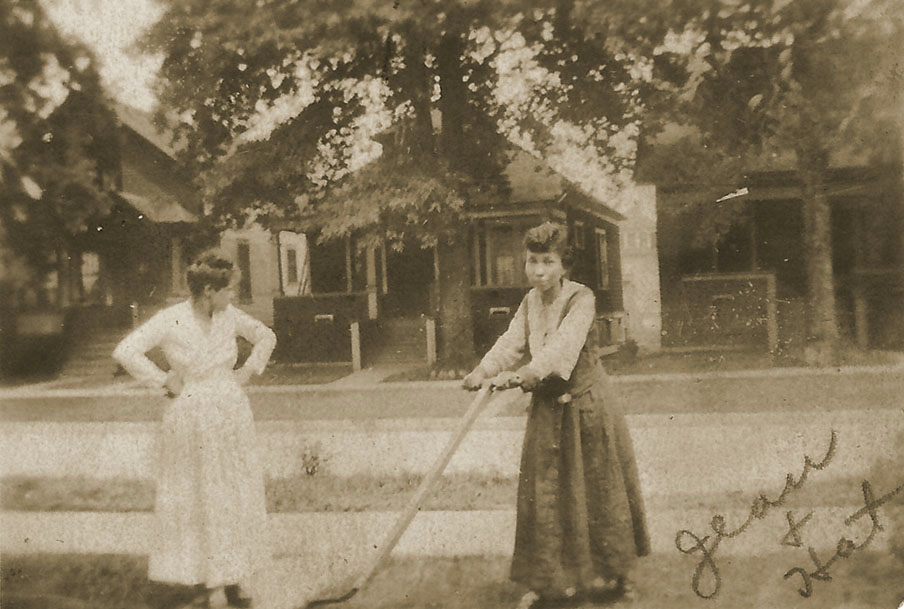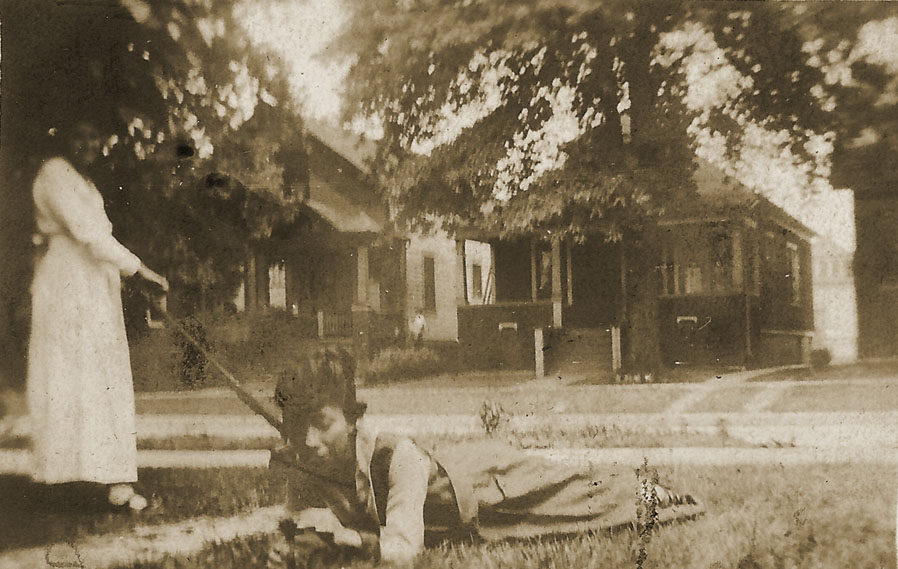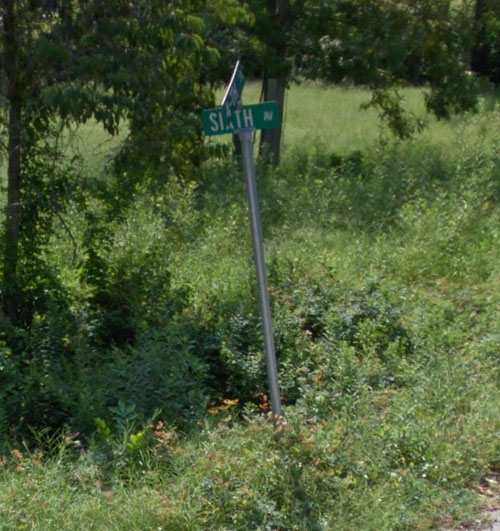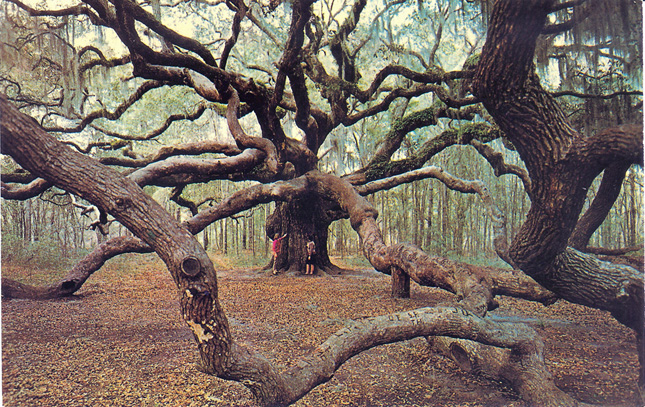My parents were married November 17 1943, at Plymouth Congregational Church in Detroit. They left immediately for Lexington Kentucky, where my father was pastor of Chandler Memorial Church until he accepted the position above as co-pastor of the interracial Fellowship Church in San Francisco. I had never seen this photograph before my cousin scanned it for me yesterday. There is no newspaper name or date on the clipping. Perhaps it appeared in The Sun, a black newspaper, founded in San Fransisco in 1944.
How Many Monsters Did You Create Today?
My friend, historian Paul Lee, asked me to publish the following article after a rash of violence in Detroit by young black men. The original articles were written by my father, Albert B. Cleage Jr/Jaramogi Abebe Agyeman, in 1968. It is depressing how the more time passes, the worse things seem to get. All photographs, aside from the first, are from The Illustrated News and were taken by photographer Billy Smith during the early 1960s. KCW
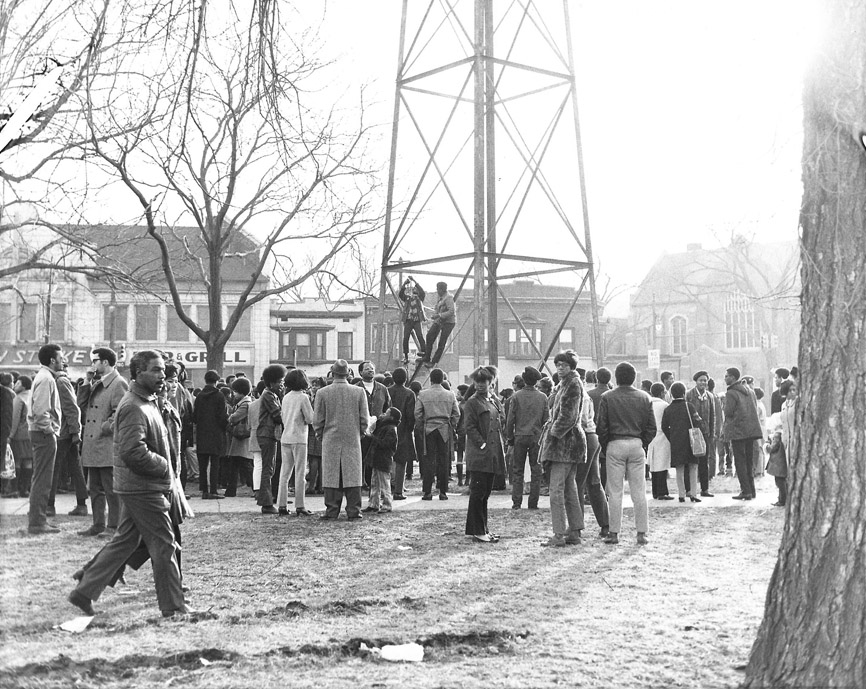
The following article is excerpted from a report on two columns by Jaramogi Abebe Agyeman, then known as the Rev. Albert B. Cleage, Jr., which were originally published in The Michigan Chronicle on May 4 and June 29, 1968, respectively.
Jaramogi Agyeman was the charismatic founder and pastor of the Shrines of the Black Madonna of the Pan African Orthodox Christian Church (PAOCC) and the father of Black Christian Nationalism (BCN), its sacred-secular creed of Black Power, or self-determination, which was proclaimed on Easter Sunday, March 26, 1967.
The Shrine sought to reclaim the African roots of Christianity and, at least until the passing of its founder on Feb. 20, 2000, to restore the historic sovereignty of black people, who were considered the scattered “Black Nation, Israel,” by forming a “black nation within a nation,” which included governing majority-black communities.
During his half-century in the black liberation struggle, he was called the “Apostle of Youth” because of his deep concern for and involvement with the education of young black persons, particularly with regard to addressing their inculcated sense of self-hatred, or “Acceptance of Black Inferiority” (ABI). From the 1960s to the 1990s, he was aided in this concern by the substantial percentage of Shrine members who were teachers.
The report and two of his weekly “Message to the Black Nation” columns dealt with ideas that he presented at “Project Salvation,” a Black Ministers-Teachers Conference sponsored by the Black Teachers Workshop at the University of Detroit-Mercy on April 27, 1968. It was attended by 300 conferees from across the country.
While much has changed in the Detroit Public Schools (DPS) since then, much has remained the same, or gotten worse, including the anti-democratic takeover of DPS by a black Emergency Manager imposed by Michigan’s white, racist, right-wing governor, who’s doing the bidding of corporations.
In light of the deplorable state of our schools and the dangers posed by young “monsters” here and across the country, many of Jaramogi Agyeman’s insights and prescriptions remain relevant. — Paul Lee
How many monsters did you create today?
A message to black ministers and educators
By Jaramogi Abebe Agyeman
(Rev. Albert B. Cleage, Jr.)
[Monsters are persons who prey on others because they have no sense of social or human identity.] Both the schools and churches have created these monsters. They have taught black children to hate black people and therefore to hate themselves.
Now that they have seen what white people are like, they also hate white people and have abandoned the integration dream which sustained the older generation. With nothing to attach themselves to, a whole generation of lonely, vicious youth is now running up and down the streets, grabbing pocketbooks, knocking down old women, taking anything they can lay their hands on, concerned only with their own individual selves.
Unless the black church can give these young people a positive self-image and something to attach themselves to, they will destroy not only themselves but all of us.
* * *
…black churches do not play any important part in the education of black children other than the destructive one of handing down the white supremacy power symbols of a white Jesus and a white God.
The school is a white institution which perpetuates and hands down the white man’s interpretation and conception of the world. We clean up our little children, tell them to study hard and send them off to school where almost everything they learn is a distortion of the truth.
White-dominated schools teach white supremacy. … In school libraries the books are predominantly white supremacy books. In every book about Africa, “the native” has a bone in his nose. They say that they are changing the books but you stop and look. The bone is shorter, that’s all.
The books and the personnel are still teaching the same point of view: white people have done everything in the world that was worth doing and poor primitive black people have been the kindly white man’s burden. This destroys our children.
The problem is with us
[Many teachers and preachers] are overly optimistic about black parents. They seem to think that black parents are fed up and want a basic change. I do not think that black parents are fed up. If they were, they would keep their children out of school until the schools are changed. We can change the schools any day that we decide that black children are important enough.
Perhaps the most pitiful thing is the fact that many black parents still believe that white folks know best how to educate black children. When they see too many black teachers in a school, they are upset. “This school is entirely black,” they say and begin looking for a place to move where they can get their children into an integrated school. It is pathetic.
Basically the problem is with us. We cannot expect white folks to be seriously concerned about educating black children. Why should we expect them to be? We know how they treat us in employment — keeping us in the poorly paid jobs at the bottom.
We know how they treat us when it comes to selling a house — charging $19,000 for a house they would sell a white person for $15,000. Why should they be any more democratic when it comes to education? I am not surprised at them but I am surprised that it takes us so long to wake up and do something to change an educational system that our tax dollars support.
Our children are being destroyed by the schools and we are doing nothing to prevent it. Some of you will say, “Our children are not so bad.” But you know as well as I do that our black children will knock an old black woman down, rape her and take her purse containing 50 cents.
These are not just “bad kids.” These are children in a white civilization who do not have any sense of identification with anything and who do not believe in anything. These are black children who have been destroyed by the black church and the white[-dominated] school.
Do you know what saved some of you older people when you were growing up? You had a dream. Your mother told you that if you studied hard, you could rise above other black folks. She told you that if you washed your face, stood up tall and walked proud, white folks would accept you.
So you spent your time trying not to be like black folks and trying to be like white folks. In a sense that saved you. As asinine and ridiculous as it now sounds, that is what saved a lot of older black people. It was a foolish dream but it was a dream. It was something to hang on to.
We hated ourselves. We did all we could to escape from ourselves. In church on Sunday we tried to shout our way right out of our black skins.
What dream do our children have?
Now let me ask you, What dreams do our children have? They know that the old integration dream is dead. They know that the white man does not want them and they do not want the white man.
Those who belong to the Nation and attend the Shrine of the Black Madonna reject the old integration dream just as black children do. But we have something to put in its place. We are working to build a black community that we can be proud of. We have a new dream to take the place of the old dream that is dead.
But most of our young people don’t have anything. They hate themselves. They hate white people. They hate everybody. They have been psychologically murdered by the black church and the white[-dominated] school.
Look at the black community. What does a black child have to identify with? When he goes to church, he sees white folks in Sunday School lessons, white folks in the stained glass windows, and a white Jesus up front over the altar.
When he rejected the integration dream and white folks, he rejected all of them, and he is not going to come into a black church and make an exception for a white Jesus. So you don’t see our young people in churches. The church doesn’t have anything to offer so young people stay away.
Our children are mad, evil, lonesome. They feel cheated and left out. They strike out at the world in anger and frustration. This is the basic task of the Black Nation.
The only thing that can save a black child is a Black Nation that they can come into. For a black child it is the difference between life and death. For a black child this is the only thing that he can come into that will give him a sense of identity.
Out there on the street, he has nothing to believe in and having nothing to believe in is psychological death for any child.
* * *
We feel that most ghetto schools today destroy children rather than educate them. The teachers and administrators serve as power symbols and kill a black child’s self-image. Their influence, their lack of concern, and in many instances their contempt make it impossible for a black child to learn.
So, we are insisting more and more that in a school for black children … its curriculum be reoriented to cover the culture of black people; that the present textbooks, which are essentially lies, particularly in the area of social science and history, be thrown out and that textbooks explaining the history and cultural background of black people be substituted. We are not insisting that white schools teach the truth, but we do insist that schools in black ghettos teach the truth.
______________________________
This column was edited by Highland Park scholar and Michigan Citizen historical features writer Paul Lee, who indicated omissions with ellipsis (…) and paraphrases and clarifications with [brackets] and separated the Michigan Chronicle report and columns with asterisks (* * *). The subheadings are the Chronicle’s.
I’d like to thank Sala Andaiye (Adams) and Peter Goldman for their helpful proofreading, and Baba Malik Yakini for his sage counsel. — Paul Lee
Editorial Matter Copyright © 2012 by Paul Lee
Grandfather in a Boat
A photo of my grandfather, Dr. Albert B. Cleage jr. standing in a very heavy looking row boat. It was taken at Idlewild, Michigan in the early 1920s. Because my grandfather has the same tie and the same tired expression in both photographs, I believe they were taken on the same day. My aunt Gladys appears in the group photo and appears to be 2 or 3 years old so that would place it at 1925 or 1926.

The three photos below were taken earlier. My father and Henry look several years younger than they do in the photograph above. These two were part of a batch of photos all with the number 671 written on the back.
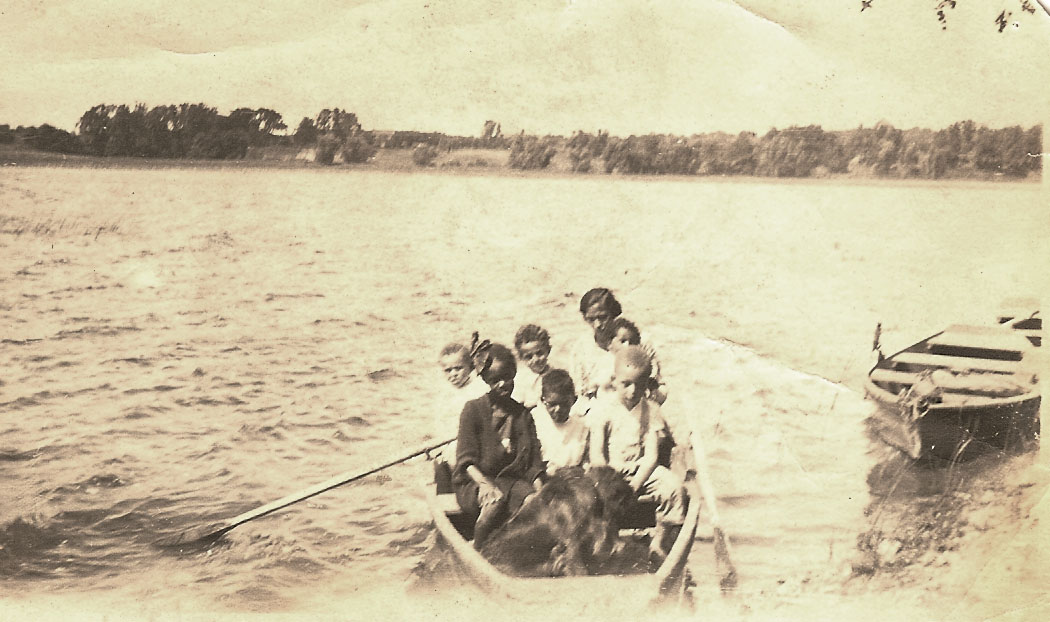
U is for Union Street
This post continues a series using the Alphabet to go through streets that were significant in my life as part of the Family History Through the Alphabet Challenge. Back to Springfield, Massachusetts for 643 Union Street. During the first 4 years of my life, my father, Rev. Albert B. Cleage, Jr, was pastor of the St. John’s Congregational church in Springfield, Massachusetts. After my father convinced the church to sell the parsonage to pay debts, we lived in the back of the church community house. Rooms upstairs were rented out. The church offices were in the front of the building down a long hall. When I was 22 we went back to visit. Everything seemed so much smaller.
Memories:
Laying on a blanket in the yard looking up at the clouds with my mother. Holding my sister, Pearl, on the way home from the hospital. Sitting on the basement steps while my grandmother washed newborn Pearl’s diapers. Making Halloween cupcakes with orange icing. Looking at the clearing evening sky after rain. Going to the ice cream parlor down the street with my sister and parents. Leafless trees against the winter sky. Huge statues going past the house in a religious procession. Yellow leaves on fall trees, a stream and a dog in the park. Watching the milkman and his horse from my bedroom window. Watching my mother being taken to the hospital on a stretcher down the long hall. A friend of my mother cutting her hair. Ribbon candy at Christmas.
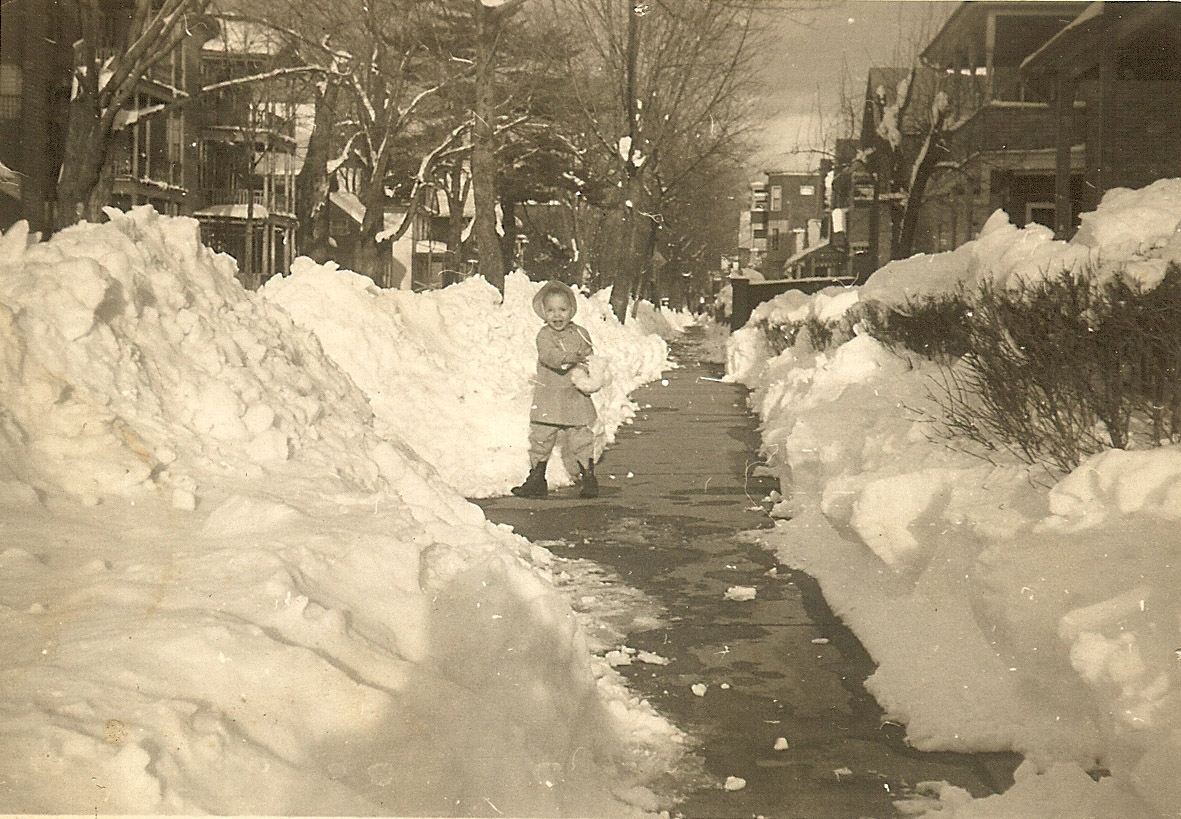
Other posts about life on Union street
The Thief of Baghdad and A Negative
Moving – Springfield to Detroit
Past is Present – Springfield, Massachusetts
Subject and Photographer
Wordless Wednesday – Christmas 1950
Sepia Saturday – Winter 1949
Jilo and Ife in Idlewild – 1977
Happy 90th Birthday to my Aunt Gladys!
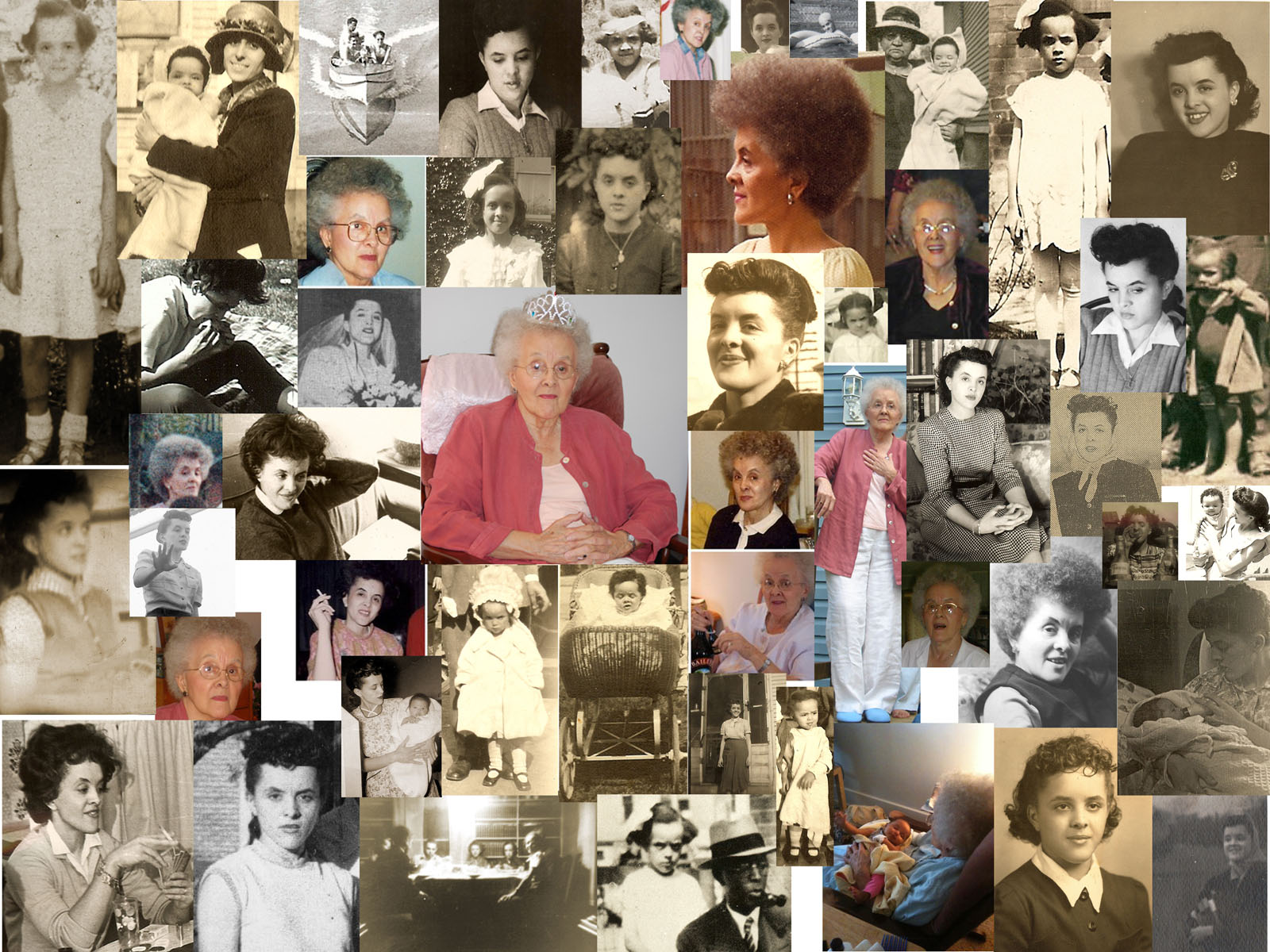
Just got back from a flying trip to Detroit for my aunt Gladys’ 90th birthday party. I saw relatives I haven’t seen since we moved from Michigan and some I hadn’t seen since they joined the family! A wonderful trip. Wish it could have been longer and I could have seen more family.
Gladys is my father’s younger sister and the 6th of the 7 children of Albert B. Cleage Sr and Pearl (Reed) Cleage. Click on both photographs to enlarge.

Four Boys and a Cannon – 1918
The two photographs below were taken in 1918 and feature my father, two of his younger brothers and a family friend. The water in the background of the second photo made me think they were taken on Belle Isle or perhaps across the Detroit River in Canada. I thought that I would be able to place the photos by using the cannon in the second picture. I was able to find several cannons in the Detroit area, unfortunately none looked like the one in the photo. The presence of a family friend makes me think it was taken in Detroit and not on a family trip to another state. At least it was labeled with names and dates.
A Dance, a Box and half of Henry
The prompt for this weeks Sepia Saturday is a photograph of a boy in front of a theater next a sign advertising a movie about an ex-convict. Standing on the far right side is a man with his head cut off by the photographer. I looked through my photos and was disappointed to find no sepia headless ones. I thought I had seen some in a box of photographs that came from my uncle Henry Cleage.
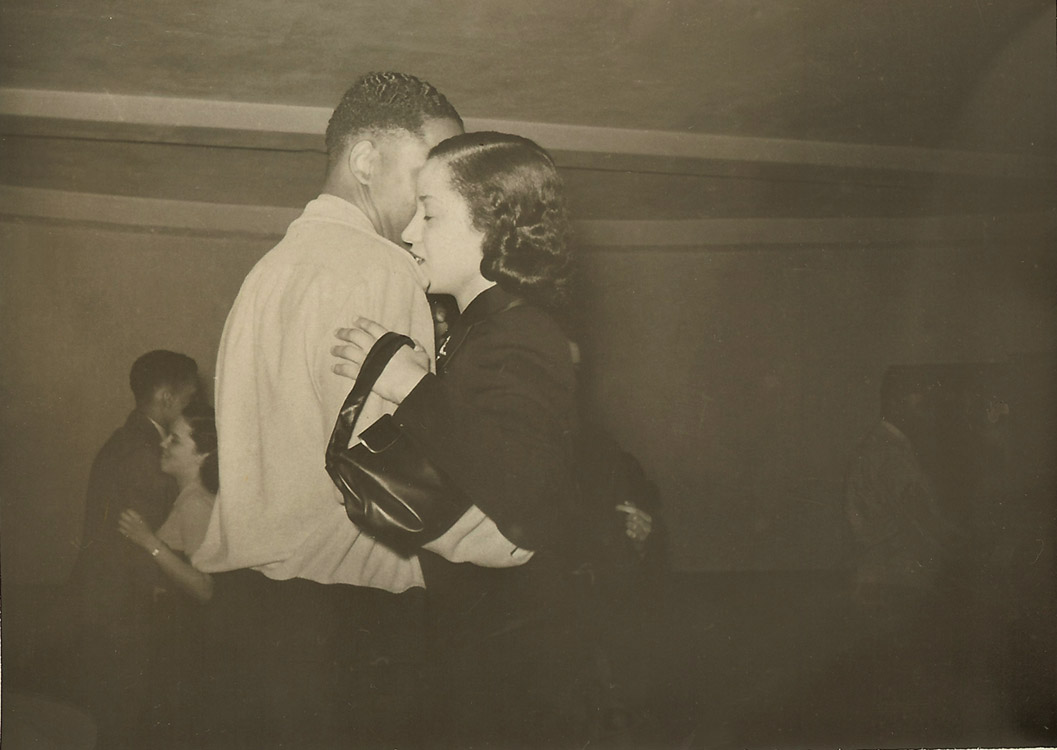
I came across this photograph in the box. Most of the photographs are of Henry’s first wife, Alice Stanton. She is the one in the front holding the purse. I noticed Doris Graham, my mother and Henry’s second wife, dancing in the background. I do not know who either of the men are. The photo was taken in 1939 or 1940 in Detroit. Henry and Alice were married on 3 September, 1941 in Detroit and divorced not too many years later. At first I thought that this photograph was taken the same day as the one below, but when I compared them, the news photo was of a much posher affair.

For some reason, at this point, I noticed the address on the box that the photographs were kept in. It was addressed to Dr. L. J. Cleage at Homer Phillips Hospital in St.Louis.
Had my Uncle Louis done his medical internship at Homer Phillips Hospital? If so, it was probably around 1940. Although both Louis and my father were enumerated with their parents on Scotten Ave. in Detroit, both were listed as absent from the home. You can see them here in the 1940 Census. I went to Ancestry.com and looked for records for Louis Jacob Cleage. In the 1940 census he was indexed with his parents but there was also a Dr. Louis Cleage in St. Louis, MO. There he was, living in the doctor’s housing at Homer G. Phillips, as a Jr. intern.
The story of Homer G. Phillips hospital is a familiar one – black citizens tired of second class health care, black doctors tired of not being able to hospitalize and care for their own patients, of being unable to practice in the hospitals in their city. Click this link to read more about Homer G. Phillips Hospital’s interesting history. My husband’s younger siblings were born in St. Louis. He thought some of them might have been born at Homer G. Phillips. As luck would have it, his sister called right about then and confirmed that she and all of the youngest five Williams’ were born there from 1950 to 1963.
I seemed to be on a roll, so I decided to see if my father was enumerated in 1940 as a student at Oberlin where he attended Seminary. He did not turn up anywhere else outside of his parents home in the 1940 census. However, he was listed in the 1940 Oberlin Student Directory. His birth date is off by 9 years, but the home address is his parent’s Scotten Ave. address in Detroit.
After all this it was an anti-climax to find one photo with half a head missing – Henry holding up some fish while standing by Lake Idlewild. Since the focus is on the fish, perhaps this doesn’t really count. My family photographers seemed to have been more likely to leave lots of space with everybody crowded to the center than they were to chop off a head. Or maybe they just tossed all of those headless photographs.
“Jean and Hat”
S is for Sixth Avenue, Mt. Pleasant, SC
This post continues a series using the Alphabet to go through streets that were significant in my life as part of the Family History Through the Alphabet Challenge. I am remembering living at 160 Sixth Avenue, Mt. Pleasant, South Carolina. We lived there for one year, I was 29 and Jim was 30. We had two daughters – Jilo, four and Ife, almost two. Jim was hired as director of the South Carolina office of the Emergency Land Fund, a group trying to stem the lose of Black Land. We moved from Atlanta, GA to Mt. Pleasant, SC. in October, 1974. His office was in Charleston. We were less than ten minutes from the ocean. For the first time, I was a “housewife”. I was a volunteer teacher with the children’s art program at the Charleston Museum. I learned how to drive. Got pregnant with our third daughter, Ayanna. In early November of 1975 the office was closed and we moved to Simpson County, Mississippi.

Memories:
The man plowing the field next to our house with a mule. Spanish moss in the oak trees. The Angel Oak, over 1,000 years, with branches on the ground as big as tree trunks. The local people’s way of talking. Getting shrimp and flounder fresh off the fishing boats. Swimming in the Atlantic. Picking up a bucket of sand dollars. Celebrating Kwanzaa. The family with 5 daughters next door, and next to them, a family with 2 boys and 3 girls and all the children in the three houses playing together in spite of the age differences. Buying day old chicks and all of them dying within a month. My great garden in that silt. Having almost no outside of the house involvement. Feeling outside of the ‘world”. Jilo going to church with the kids next door. Jilo and Ife going trick or treating in their jackets because it was so cold. Taking the bus to Michigan to visit my family, with the kids. Going to St. Louis in the VW bug for our first William’s family reunion. Visitors from Atlanta and Detroit. The end of the War in Vietnam.
October 8, 1974
Hello Mommy and Henry,
Well, everything here is moving right along. Jim still likes his job. The house is pretty well cleaned up and unpacked, but I’ll be glad when we get the furniture from Nanny and Poppy’s. We would like the dining room stuff too, if it’s available. I have enclosed a layout of our house and some postcards of our scenic view (smile) The only bad part is – the car’s broken down. After Jim drove it from Atlanta, it broke down. He is going to get a used transmission for it. I hope that does it because nothing is within easy walking. There’s a bus into Charleston, but it’s a good walk. I hope you all will be able to get down to visit this winter before we’re back to our normal living conditions. (smile). I read this article in McCall’s telling parents not to worry about their weird kids because around 30 they settle down.. Can this be true???
I found where the people had their garden and plan to put some lettuce, greens etc. in next week. I will be glad when we can meet some people! More soon – WRITE!
A note from Ife (scribble scrabble)
P.S. I may come for a week early Nov. 21, more later.
Love,
Kris
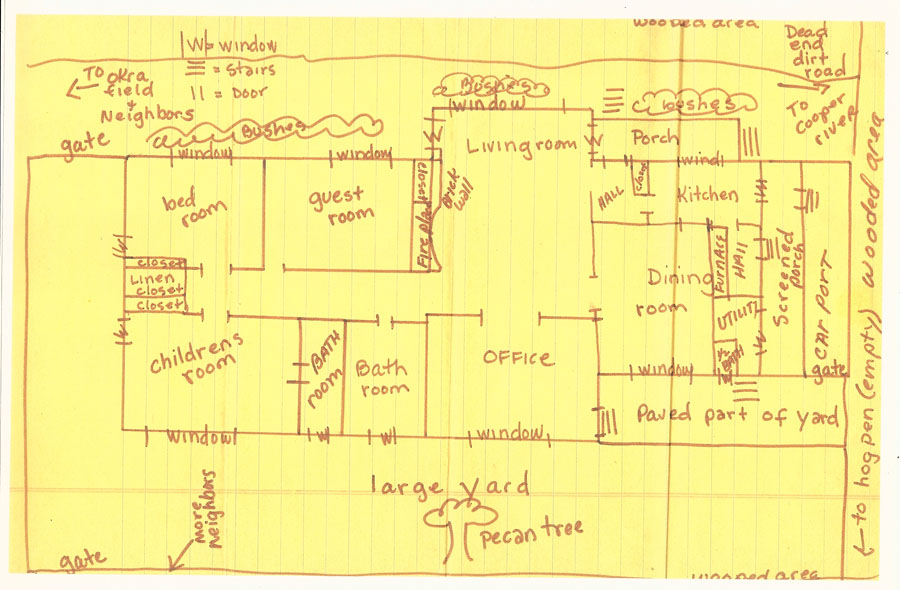

For more about the Angel Oak, go to this post – Trip to Jekyll Island
